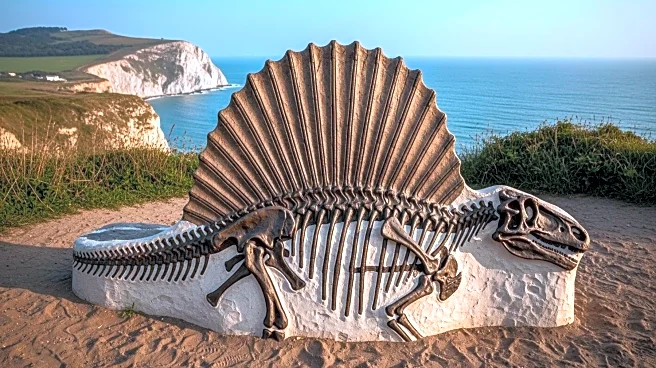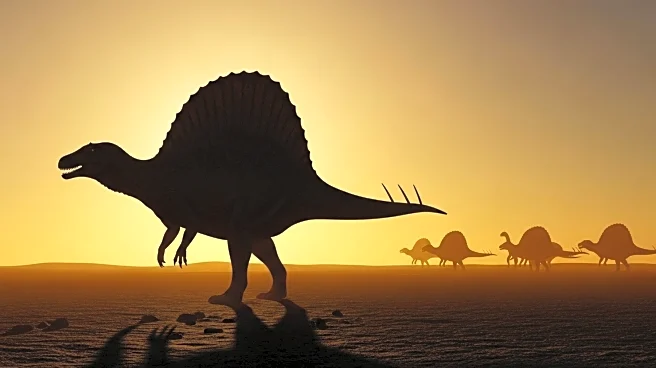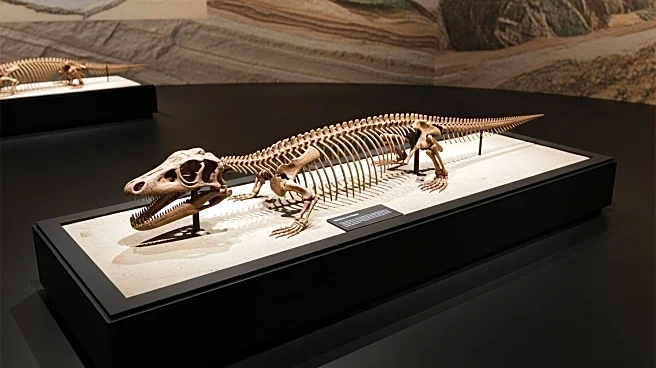What's Happening?
Researchers have uncovered a new dinosaur species, Istiorachis macarthurae, on England's Isle of Wight, characterized by a distinctive sail-like structure along its back and tail. The fossils, previously overlooked in a museum collection, have sparked scientific interest due to their unusual features. The dinosaur, a member of the iguanodontian family, is believed to have used its sail for social signaling, possibly in mating rituals or territorial displays. The discovery sheds light on the evolutionary adaptations of herbivorous dinosaurs and their social behaviors.
Why It's Important?
The discovery of Istiorachis macarthurae provides valuable insights into the social dynamics and evolutionary adaptations of dinosaurs. The sail-like structure suggests that visual displays played a significant role in the social interactions of these ancient creatures, influencing their mating and territorial behaviors. This finding challenges traditional views of dinosaur evolution, emphasizing the importance of social signals alongside physical traits. The research could lead to a deeper understanding of how social behaviors influenced the survival and evolution of dinosaur species.










